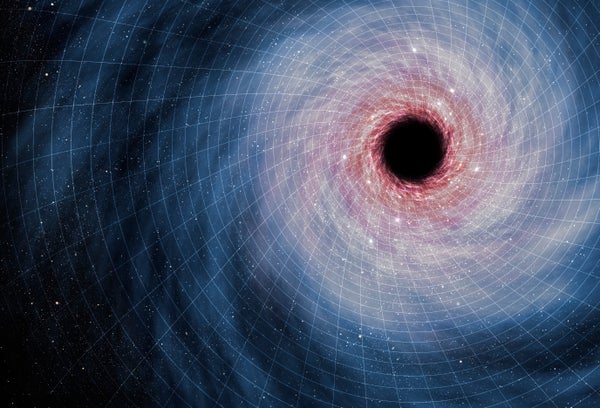This article was published in Scientific American’s former blog network and reflects the views of the author, not necessarily those of Scientific American
On the heels of the recent announcement by the Event Horizon Telescope collaboration of the first-ever image of a supermassive black hole, I interviewed astrophysicist Katie Mack about the new image and black holes in general.
Katie is an assistant professor of physics at NC State and a member of the university’s Leadership in Public Science Cluster. Her area of specialization is cosmology, including the early universe, galaxy formation, black holes, dark matter and how the universe will end, the latter of which is the subject of her first popular science book, The End of Everything, which will be published next year by Scribner.
Public outreach is a passion of hers, in particular via her popular Twitter feed @AstroKatie, wherein she does an admirable job explaining science for all audiences in a way that is often quite poetic and captures the sense of wonder and awe with all things astronomical.
On supporting science journalism
If you're enjoying this article, consider supporting our award-winning journalism by subscribing. By purchasing a subscription you are helping to ensure the future of impactful stories about the discoveries and ideas shaping our world today.
In this 45-minute interview we use EHT’s startling new image of the black hole in the center of galaxy M87 as a jumping off point to discuss the history of our knowledge of black holes, from theoretical consequences of Einstein’s relativity equations to actual observed objects in the universe.
Katie helped me to understand the significance of the new image and why it appears exactly as it does. And in the process, we talk about both stellar and supermassive black holes, as well as neutron stars. And she answers a wide range of questions—for instance, where does all the material of a star go when it collapses to a black hole? And how do we know there’s a black hole in the center of our own galaxy? We also talk about LIGO and gravitational waves...and I finally get the answer to the classic astronomy riddle known as Olbers’ Paradox.
